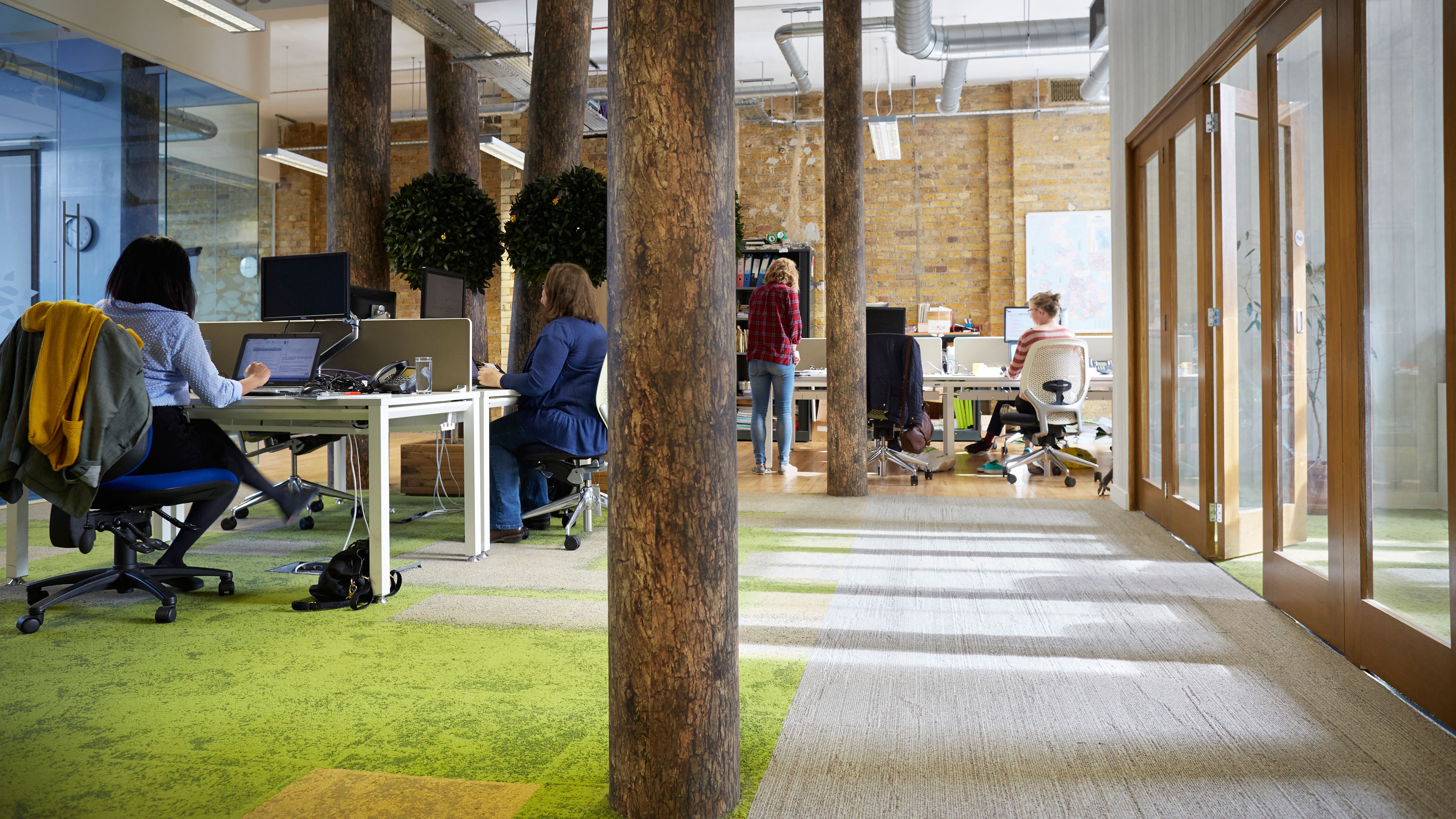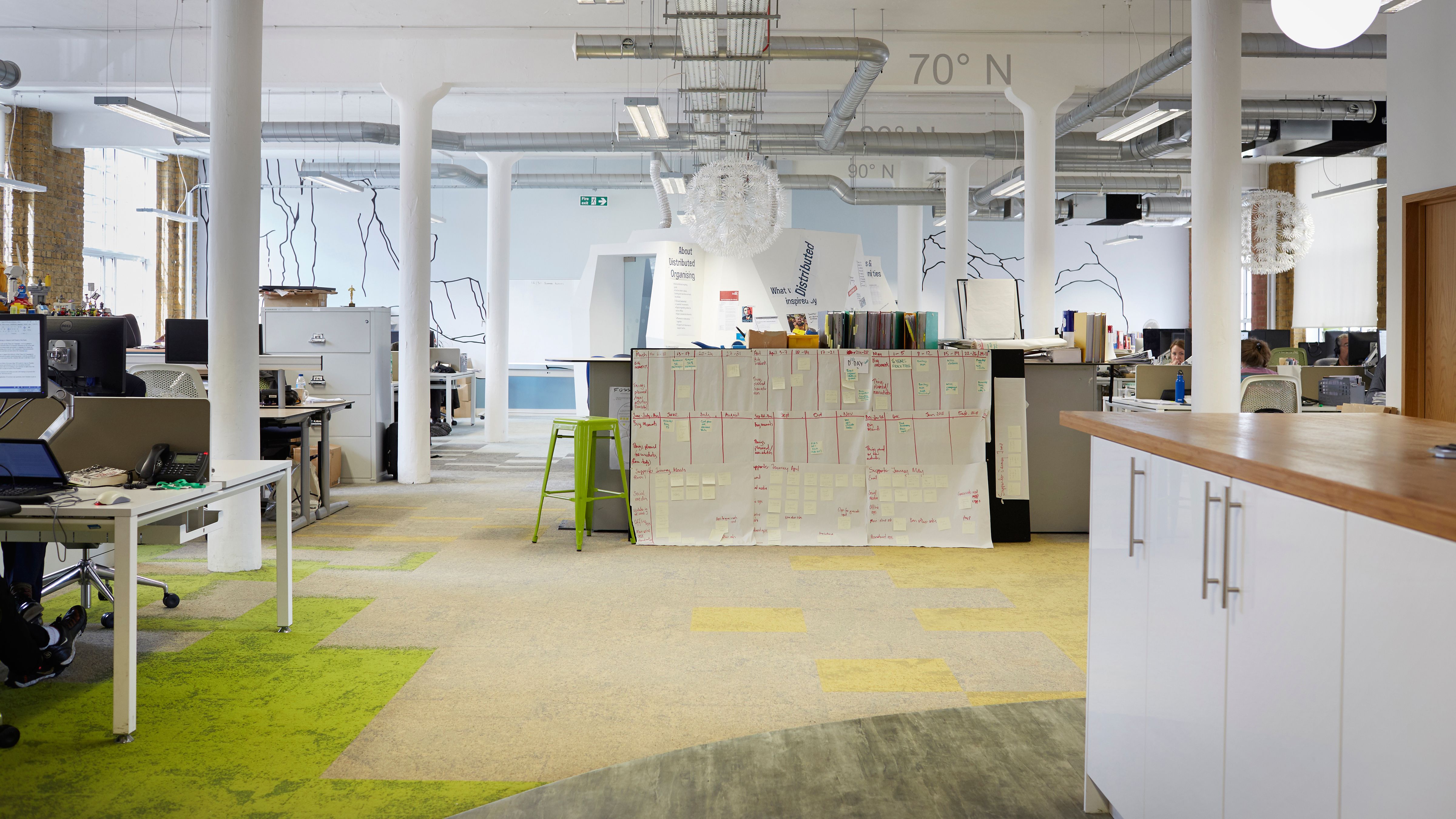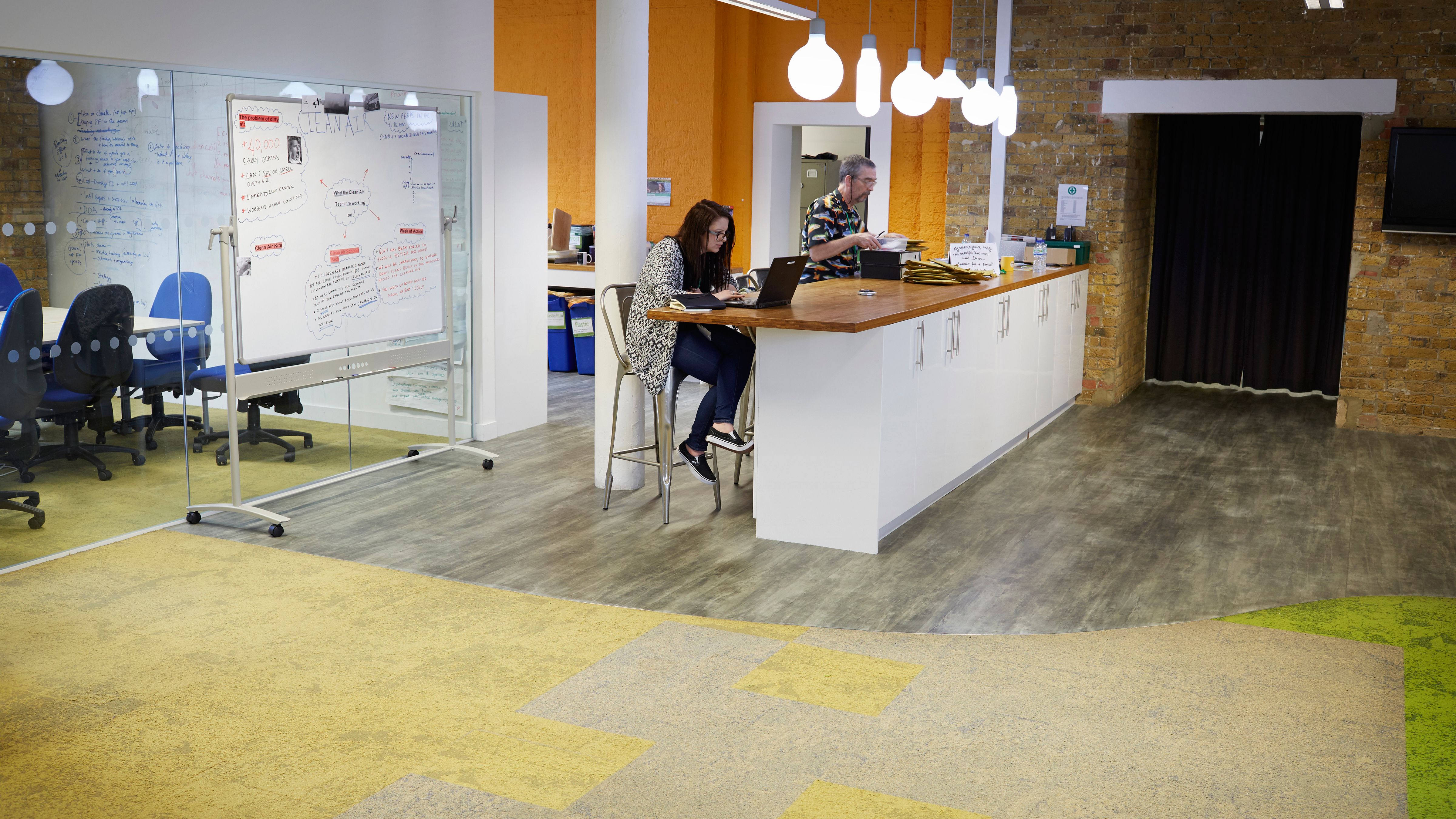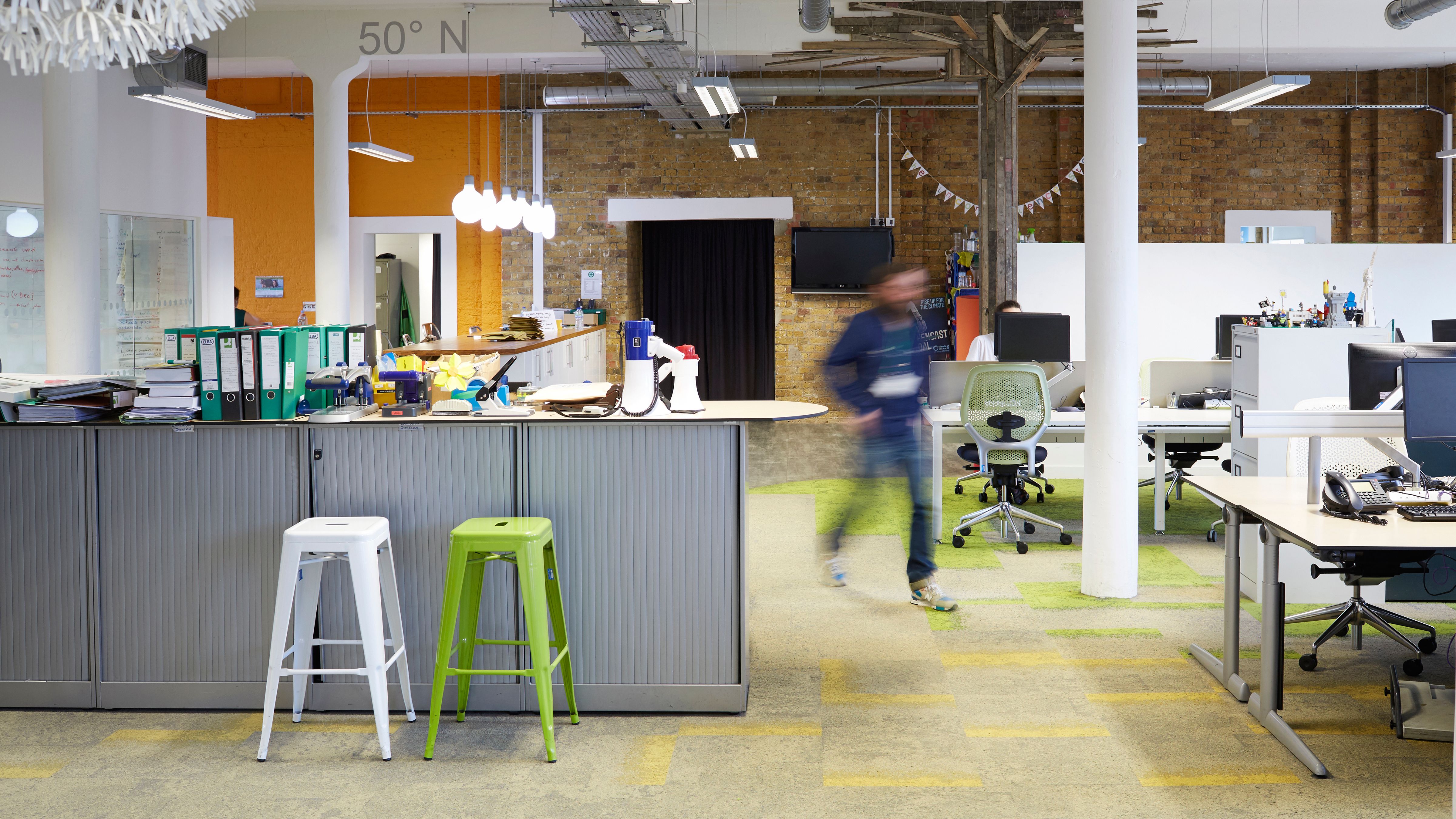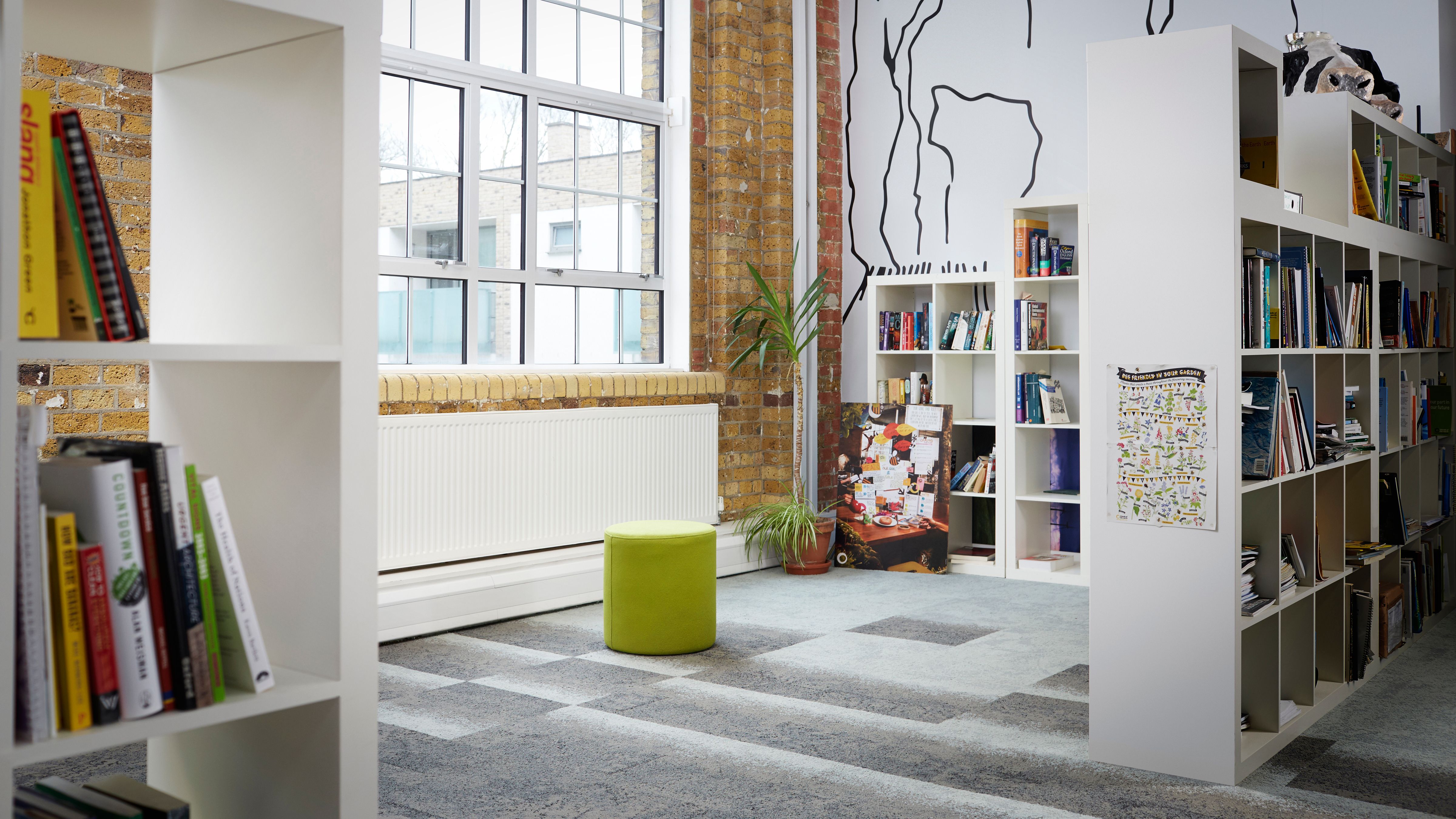There’s been a wealth of evidence in recent years demonstrating a clear and measurable link between the way a space is designed and the productivity of workers. Here at Interface, we believe that design of a space should enhance the mood, productivity and creativity of those using it. Positive design is about making a space which is flexible enough to deal with the continually changing way it’s being used.
Office interiors containing plenty of natural light and views out onto nature, in particular, have been found to significantly improve workers’ creativity and output. It’s no wonder that so many companies are exploring the benefits of incorporating such natural elements – a concept known as biophilic design – into their office interiors to create Positive spaces™ designed to support occupants’ well-being. Spanish architects, Selgas Cano, for example, have designed a completely new headquarters in Madrid, semi-submerged in the floor of a woodland glade, boasting a panoramic window that curves upwards to form the ceiling. This maximises daylight in the space and allows team members to contemplate the trees outside, feeding their ingenuity.
This focus on health and well-being in the workplace has become so important in recent years that a new code for structures – the WELL Building Standard – has recently been launched. The standard uses research-backed strategies to promote the development of buildings and interior spaces designed to advance the health, happiness, mindfulness and productivity of occupants.
Another example of a company focusing on well-being in its office interior is Friends of the Earth. When designing its new office, the environmental campaigning charity wanted to create a positive workplace that reflected the organisation’s core environmental beliefs, while ensuring staff and volunteers could better engage and interact with each other. Biophilic design proved the perfect option for their new office, tying together their focus on well-being while also reflecting their purpose to improve the natural world.
To achieve this, we at Interface supported interior specialists, Peldon Rose, to choose a range of our modular flooring collections for Friends of the Earth’s new workplace. Peldon Rose used our products to develop a unique ‘round the world’ flooring design to bring the charity’s brand identity and purpose to life, by showcasing the charity’s global reach; from the tropical rainforests to the Arctic.
Carpet tiles from our nature-inspired Urban Retreat range gave the illusion of textured grass and sandy desert in the communal areas of the office. Flooring from our sustainable Net Effect range was used to capture the moment when sea foam reaches the shore, while a unique iceberg-themed space was created in which the tiles were used to add the illusion of light moving through water.
The desire for a positive space inspired this project and many others. Creating such environments with health and well-being in mind can help bring team members together. It can boost their work performance and, in doing so, can sow the seeds for organisations to thrive and grow into the future.
Find out more about the project with our case study video.
